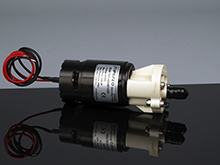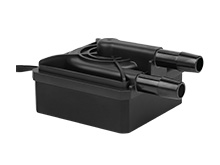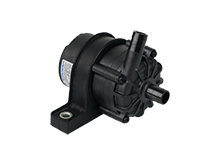Electric water heater brushless DC booster pump solution recommendation
2023-06-12
Background Introduction
Electric water heater is a water heater that uses electricity as an energy source for heating. It is one of the three major water heaters alongside with gas water heater and solar water heater. It can be divided into three types according to the size of heating power: storage type, instantaneous heating type and quick heating type.
Among them, the instantaneous water heater does not require the use of any stored hot water, instant hot, can meet the demand for hot water 24 hours a day, no waste of energy, loved by the majority of customers. However, during peak electricity consumption, the unstable voltage input leads to changes in water flow, and changes in water flow lead to sudden cold and hot water temperature; there is also too much noise when the water heater is in use and other conditions directly affect the user's shower feeling. So electric water heater manufacturers commonly through the built-in booster pump to solve this problem.
Working Principle
The electric water heater is a household electrical equipment in which cold water enters the water heater and then the water is instantly heated by the brushless DC booster pump to the heating system, and then the water is circulated to each water-using unit.
The simple principle schematic diagram is as follows, mainly composed of power supply, brushless DC booster pump, solenoid valve and flow valve assembly, and heater tank assembly.

The principle of operation of electric water heaters is based on the following steps:
Cold water enters the electric water heater: Cold water enters the container of the water heater through the inlet pipe.
Water pump conveys water: The electric water heater is equipped with a brushless DC booster pump, which is responsible for conveying cold water from the tank to the heating system. The water pump generates centrifugal force by rotating and pushing the water towards the heating element.
The heating system heats the water: As the water enters the heating system, it comes into contact with the heating element (usually an electric heater or heat generator), which heats the water by passing an electric current through it.
Hot water supply: Once the water is heated to a set temperature, hot water flows out of the heating system and is transferred to each water-using unit (e.g. sink, shower, etc.) via the outlet pipe.
Technical requirements for electric water heater booster pumps
In order to achieve a good match between the electric water heater and the brushless DC booster water pump, the manufacturer should consider the following requirements when designing and selecting the micro water pump, and conduct sufficient tests and verifications to ensure its performance and reliability in the electric water heater application.
|
Operating Parameters
|
|
Flow rate:12~24L/Min
|
A、Lightweight
B、Low noise operation required:
①Low noise level of the pump itself
②Batch consistency within 1-2 dB(A)
③Low overall noise (resonance)
C、Intelligent, high efficiency
|
|
Outlet pressure:8~11M
|
|
Noise:<42dB
|
Although the electric water heater achieves fast heating, the traditional AC pump, which is vulnerable to noise and voltage floating interference. So for electric water heaters, TOPSFLO micro pumps have the following two options to recommend:
For electric water heaters with power above 8KW, TOPSFLO recommends DC booster pump TL-C01 series:
TL-C01-C12-2411 24L 11M
Noise: ≤42dB(A) IP Grade: IP68,suitable for wet environments
Ambient temperature:-40℃~40℃ Liquid temperature:-40°℃~75°℃
Built-in intelligent chip, adjustable flow and signal feedback Compared with traditional AC motors, the efficiency is increased by 30%

For electric water heaters with a power of 3-8KW, TOPSFLO recommends the DC booster pump TL-B10 series
TL-B10-D24-1208 12L 8M
Noise:<40dB(A) IPGrade:IP68,suitable for wet environments
Ambient temperature:-40℃~40℃ Liquid temperature:-40°℃~75°℃
Built-in intelligent chip, adjustable flow and signal feedback Compared with traditional AC motors, the efficiency is increased by 30%
TOPSFLO brushless DC water pump has excellent performance and reliability, which can effectively boost the electric water heater and provide a comfortable hot water experience. Customers can choose the appropriate model according to the actual application requirements, or contact our sales staff for more detailed information. We look forward to providing you with quality products and services.










.jpg)



